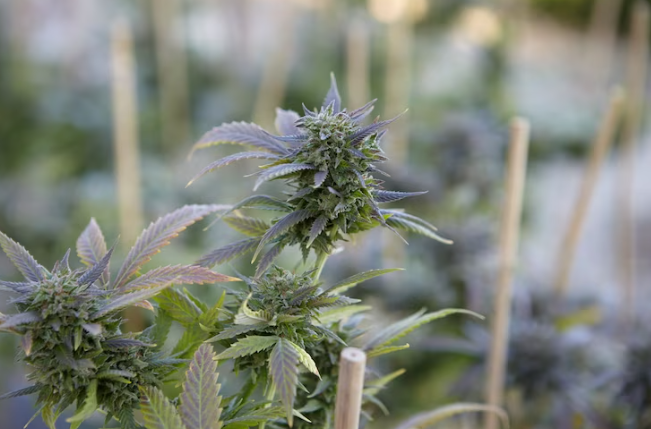
Hemp vs. Marijuana: Understanding the Key Differences and Dispelling Myths
Hemp and marijuana are two closely related plants that often cause confusion due to their similarities. While they both belong to the Cannabis sativa species, they differ significantly in terms of their chemical composition, cultivation methods, and uses. Understanding the distinctions between hemp and marijuana is crucial for dispelling myths and misconceptions surrounding these plants. In this article, we will delve into the key differences and shed light on the unique characteristics of each plant.
Hemp vs. Marijuana: Understanding the Key Differences
Hemp and marijuana exhibit distinct characteristics, which can be classified into several categories:
Chemical Composition
Hemp and marijuana contain different levels of key cannabinoids, particularly tetrahydrocannabinol (THC) and cannabidiol (CBD). THC is the psychoactive compound responsible for the “high” associated with marijuana, while CBD is non-intoxicating and known for its potential therapeutic benefits. The table below illustrates the differences in THC and CBD content between hemp and marijuana.
| THC Content | CBD Content | |
|---|---|---|
| Hemp | Low (<0.3%) | High |
| Marijuana | High | Variable |
Cultivation Methods
The cultivation techniques for hemp and marijuana vary due to their specific purposes. Hemp is typically grown outdoors in large fields, as it thrives in various climates and requires less attention. On the other hand, marijuana is often cultivated indoors under controlled conditions to optimize its THC content. This distinction is crucial for understanding the legal aspects associated with each plant.
Legal Status
The legal status of hemp and marijuana differs significantly across jurisdictions. In many countries, hemp cultivation and the use of hemp-derived products are legal, as long as they contain less than 0.3% THC. This legal threshold ensures that hemp products do not induce psychoactive effects. However, marijuana is classified as a controlled substance in most places due to its high THC content. It’s important to research and adhere to the regulations of your specific region.
Uses and Applications
Hemp and marijuana have diverse applications, each offering unique benefits:
- Hemp: Hemp fibers are utilized in various industries, including textiles, construction, and paper manufacturing. Hemp seeds are rich in protein and healthy fatty acids, making them a popular ingredient in dietary supplements and food products. Additionally, hemp-derived CBD is used in wellness products for its potential therapeutic properties.
- Marijuana: Due to its high THC content, marijuana is primarily used for recreational or medicinal purposes. It is often consumed for its psychoactive effects and has shown promise in alleviating symptoms associated with certain medical conditions. However, marijuana’s legality for medical use varies depending on the jurisdiction.
Environmental Impact
Hemp cultivation has gained attention for its positive environmental impact. The plant has a rapid growth cycle and requires minimal pesticides or herbicides, making it a more sustainable option compared to many traditional crops. Furthermore, hemp cultivation can help improve soil health and reduce carbon dioxide levels. In contrast, marijuana cultivation tends to involve energy-intensive indoor setups, which contribute to a larger carbon footprint.
Common Myths About Hemp and Marijuana
To dispel common myths surrounding hemp and marijuana, let’s address some frequently asked questions:
FAQ 1: Will consuming hemp products make me high?
Contrary to popular belief, consuming hemp products will not induce a “high” effect. Hemp contains minimal amounts of THC, the psychoactive compound responsible for the intoxicating effects of marijuana. The THC content in hemp is significantly lower than the legal threshold of 0.3%, making it non-intoxicating.
FAQ 2: Is hemp illegal?
Hemp cultivation and the use of hemp-derived products are legal in many countries as long as they comply with the specified THC content limit. It’s essential to research and understand the regulations within your jurisdiction, as laws may vary.
FAQ 3: Can marijuana be used for medicinal purposes?
Yes, marijuana has shown promise in alleviating symptoms associated with various medical conditions. However, its medical use is subject to regulations and varies across different regions. It’s crucial to consult with a healthcare professional and adhere to local laws regarding the medical use of marijuana.
FAQ 4: Are all CBD products derived from marijuana?
No, CBD products can be derived from both hemp and marijuana. However, hemp-derived CBD products are more widely available due to the legal status of hemp cultivation and its higher CBD content. Marijuana-derived CBD products may be subject to stricter regulations in many jurisdictions.
FAQ 5: Can hemp be used as a sustainable alternative to traditional materials?
Absolutely! Hemp offers a sustainable alternative to traditional materials due to its rapid growth cycle, low water requirements, and minimal need for pesticides or herbicides. Hemp fibers are eco-friendly and can be used in various industries, promoting a greener approach to manufacturing.
FAQ 6: Are there any potential side effects of using marijuana?
While marijuana can offer medicinal benefits, it’s essential to be aware of potential side effects. Common side effects of marijuana use may include dry mouth, red eyes, impaired memory, and increased heart rate. Additionally, marijuana’s psychoactive effects can impact cognitive and motor functions, making it important to use responsibly.
Conclusion
By understanding the key differences between hemp and marijuana, we can dispel myths and misconceptions surrounding these plants. Hemp and marijuana possess distinct properties, legal statuses, and uses. Hemp offers a versatile and sustainable resource, while marijuana is primarily known for its recreational and medicinal applications. As regulations continue to evolve, it’s crucial to stay informed and make informed choices regarding hemp and marijuana use.